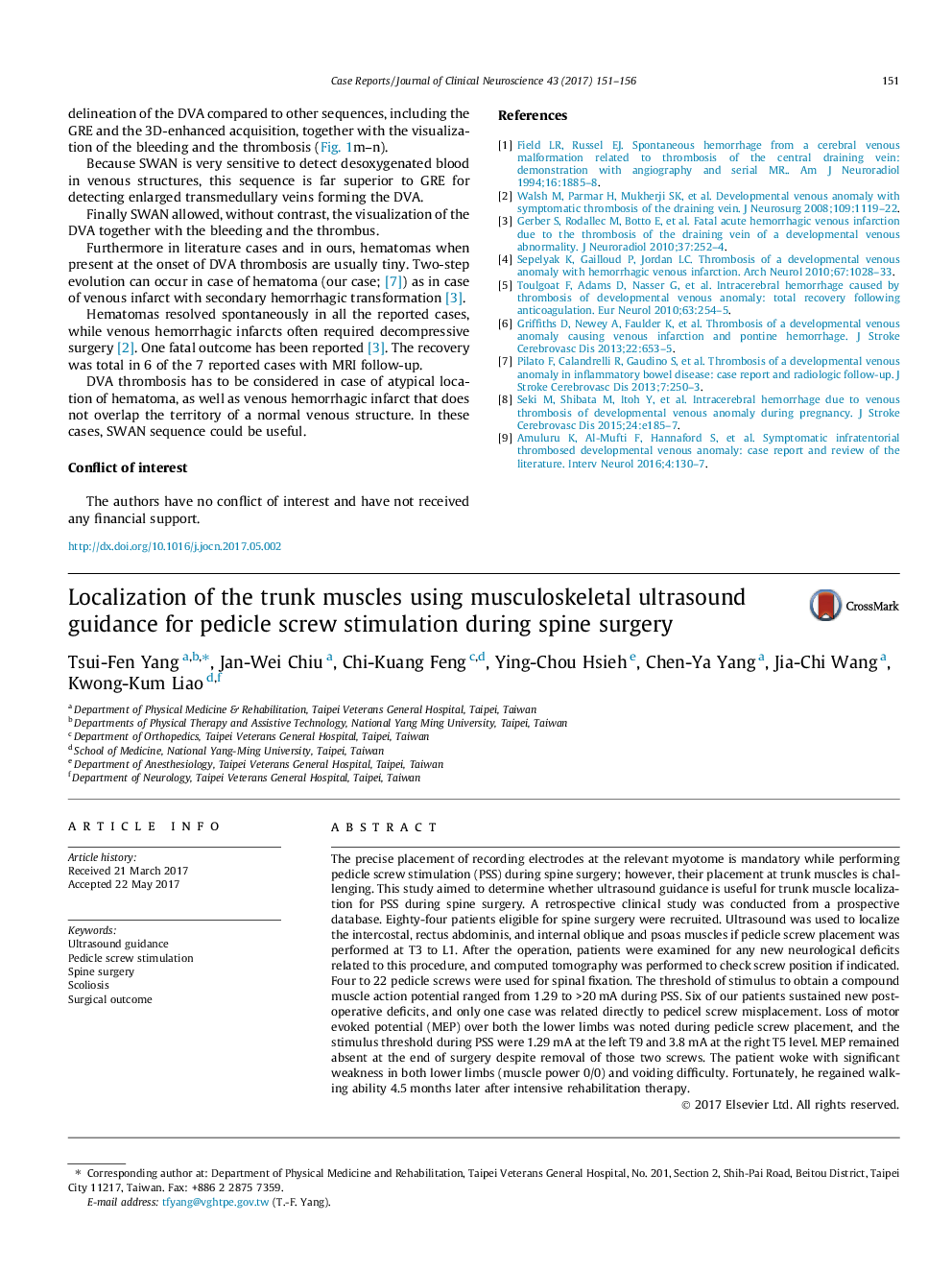| کد مقاله | کد نشریه | سال انتشار | مقاله انگلیسی | نسخه تمام متن |
|---|---|---|---|---|
| 5629652 | 1580273 | 2017 | 6 صفحه PDF | دانلود رایگان |

- PSS ascertains the placement of pedicle screw intraoperatively.
- The placement of recording needles is more challenging for trunk muscles.
- Localization of trunk muscles under US guidance is feasible, simple, and safe.
- Localization of trunk muscles under US guidance helps to improve surgical outcomes.
The precise placement of recording electrodes at the relevant myotome is mandatory while performing pedicle screw stimulation (PSS) during spine surgery; however, their placement at trunk muscles is challenging. This study aimed to determine whether ultrasound guidance is useful for trunk muscle localization for PSS during spine surgery. A retrospective clinical study was conducted from a prospective database. Eighty-four patients eligible for spine surgery were recruited. Ultrasound was used to localize the intercostal, rectus abdominis, and internal oblique and psoas muscles if pedicle screw placement was performed at T3 to L1. After the operation, patients were examined for any new neurological deficits related to this procedure, and computed tomography was performed to check screw position if indicated. Four to 22 pedicle screws were used for spinal fixation. The threshold of stimulus to obtain a compound muscle action potential ranged from 1.29 to >20Â mA during PSS. Six of our patients sustained new postoperative deficits, and only one case was related directly to pedicel screw misplacement. Loss of motor evoked potential (MEP) over both the lower limbs was noted during pedicle screw placement, and the stimulus threshold during PSS were 1.29Â mA at the left T9 and 3.8Â mA at the right T5 level. MEP remained absent at the end of surgery despite removal of those two screws. The patient woke with significant weakness in both lower limbs (muscle power 0/0) and voiding difficulty. Fortunately, he regained walking ability 4.5Â months later after intensive rehabilitation therapy.
Journal: Journal of Clinical Neuroscience - Volume 43, September 2017, Pages 151-156